Alessandro Scarabello. The Garden of Phersu

© The Gallery Apart, Rome | Alessandro Scarabello, The Womb, 2015, cm179,5 x 140, oil on canvas
Dal 12 May 2016 al 31 July 2016
Roma
Luogo: The Gallery Apart
Indirizzo: via Francesco Negri 43
Telefono per informazioni: +39 06 68809863
E-Mail info: info@thegalleryapart.it
Sito ufficiale: http://www.thegalleryapart.it
The Gallery Apart è orgogliosa di presentare The Garden of Phersu, l’ultimo ciclo di lavori che Alessandro Scarabello ha realizzato dopo l’MFA alla Royal Academy of Fine Arts-KASK di Ghent (B) e il suo trasferimento a Bruxelles. Un intenso periodo di elaborazione e ricerca che si concretizza in una serie di tele di grandi e medie dimensioni e di disegni su carta che testimoniano tanto l’evoluzione di un percorso quanto la linea di continuità con il lavoro precedente dell’artista che The Gallery Apart segue sin dai suoi esordi.
Scarabello sceglie un riferimento a metà strada tra storia e mito quale titolo della mostra, richiamando la figura enigmatica di Phersu, un personaggio ritratto in affreschi dipinti su alcune tombe etrusche di Tarquinia caratterizzato da elementi fisiognomici e prossemici che ne rendono appieno la caratteristica di maschera, come peraltro confermato dal nome recato dalle iscrizioni che significa appunto maschera e che è poi all’origine del latino persona. Nelle opere proposte in mostra, che l’artista considera l’affermazione di un lessico composto da elementi tecnici e teorici assorbiti e raccolti negli ultimi due anni, l’attenzione al corpo e alla corporeità è mediata attraverso il ricorso ad un oggetto-simulacro, lo spaventapasseri, che del corpo umano ripropone posture e forme, ma senza i limiti imposti dalla realtà e dalla verosimiglianza, bensì lasciando libero spazio alla deformazione e alla surrealtà, alla maschera appunto. Nell’immaginario dell’artista, sia Phersu (che è un traghettatore verso l’Oltretomba) sia lo spaventapasseri rappresentano figure in bilico tra la risata nevrotica e l’orrore, come molte figure della commedia dell’arte e della tradizione culturale italiana.
Il lavoro di Scarabello è da sempre collegato alla teatralità, alla maschera, alla messa in scena, ma oggi la sua ricerca si concentra nell’ambito più specifico dell’identità. Come in una fotografia al negativo, l’artista cura tale ambito sotto il profilo della spersonalizzazione, nel tentativo di chiarire come l’individuo, a contatto con la cultura massificata, lo “spettacolo” e la continua proliferazione di immagini, alteri se stesso per meglio adattarsi alla realtà in modo da perseguire con efficacia strategie, a volte anche istintive e inconsapevoli, tese ad allontanare la paura atavica della morte. Strategie che spesso assumono connotazioni grottesche, evidenziando quanto la reazione dell’individuo alla contemporaneità possa risultare goffa, come lo sono i suoi comportamenti. Nelle opere di Scarabello i movimenti dei soggetti si estremizzano per un deficit di comunicazione verbale e si riducono fino all’immobilità per un eccesso di compensazione.
L’immagine simulacro di volta in volta creata da Scarabello si colloca quasi sempre in ambienti caratterizzati da fitta vegetazione. E’ una costante che l’artista pone in diretta correlazione con il modo in cui gli occidentali percepiscono l’idea della fuga, della distrazione, del divertimento. L’immagine stereotipata dei paesaggi e della natura, e quindi il desiderio di “esotico”, di vacanze in terre tropicali, deriva direttamente dalla (triste) eredità lasciata dai colonizzatori occidentali e dalla loro percezione unidirezionale del “nuovo mondo”.
Il corpo di opere proposto in mostra si perfeziona all’esito di una lunga fase di approfondimento e riflessione, transitata attraverso l’interrogarsi intorno all’alternanza di vuoto e pieno, soffermatasi sulla sperimentazione della tridimensionalità mediante lo sfondamento della tela e la sovrapposizione di brandelli di pittura, influenzata da una forte attrazione per la pittura astratta che si è manifestata in pulsioni verso l’esasperazione di gestualità e forme.
Tutto ciò ha contribuito a creare il sostrato sul quale Scarabello ha acquisito la determinazione ad osare con il colore e ad affrontare con maggiore espressività la tela. Nei dipinti in mostra l’elemento figurativo viene restituito attraverso una lettura astratta del dettaglio e, l’idea di “vuoto” si concretizza attraverso il modo di dipingere anziché la manipolazione del supporto.
Inaugurazione: 12 maggio 2016 h.18
SCARICA IL COMUNICATO IN PDF
COMMENTI

-
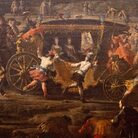 Dal 20 December 2025 al 20 April 2026
Caserta | Reggia di Caserta
Dal 20 December 2025 al 20 April 2026
Caserta | Reggia di Caserta
Regine: trame di cultura e diplomazia tra Napoli e l’Europa
-
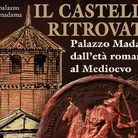 Dal 19 December 2025 al 23 March 2026
Torino | Palazzo Madama - Museo Civico d’Arte Antica
Dal 19 December 2025 al 23 March 2026
Torino | Palazzo Madama - Museo Civico d’Arte Antica
Il castello ritrovato. Palazzo Madama dall’età romana al medioevo
-
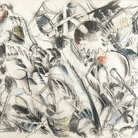 Dal 17 December 2025 al 19 January 2026
Roma | Palazzo della Cancelleria
Dal 17 December 2025 al 19 January 2026
Roma | Palazzo della Cancelleria
De Humana Mensura di Linda Karshan
-
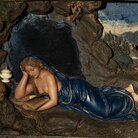 Dal 18 December 2025 al 12 April 2026
Firenze | Gallerie degli Uffizi
Dal 18 December 2025 al 12 April 2026
Firenze | Gallerie degli Uffizi
Cera una volta. Sculture dalle collezioni medicee
-
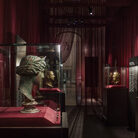 Dal 11 December 2025 al 9 April 2026
Firenze | Museo Archeologico Nazionale di Firenze
Dal 11 December 2025 al 9 April 2026
Firenze | Museo Archeologico Nazionale di Firenze
Icone di Potere e Bellezza
-
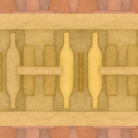 Dal 11 December 2025 al 11 January 2026
Roma | Palazzo Esposizioni Roma
Dal 11 December 2025 al 11 January 2026
Roma | Palazzo Esposizioni Roma
Giorgio Morandi nella Collezione Eni. Un viaggio attraverso la storia culturale del cane a sei zampe e l’eredità di Enrico Mattei


